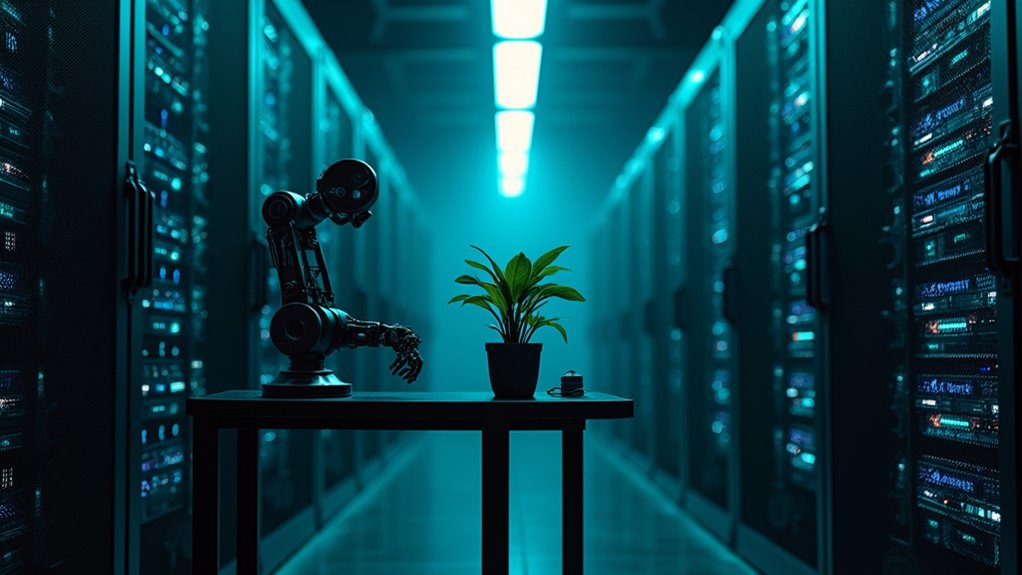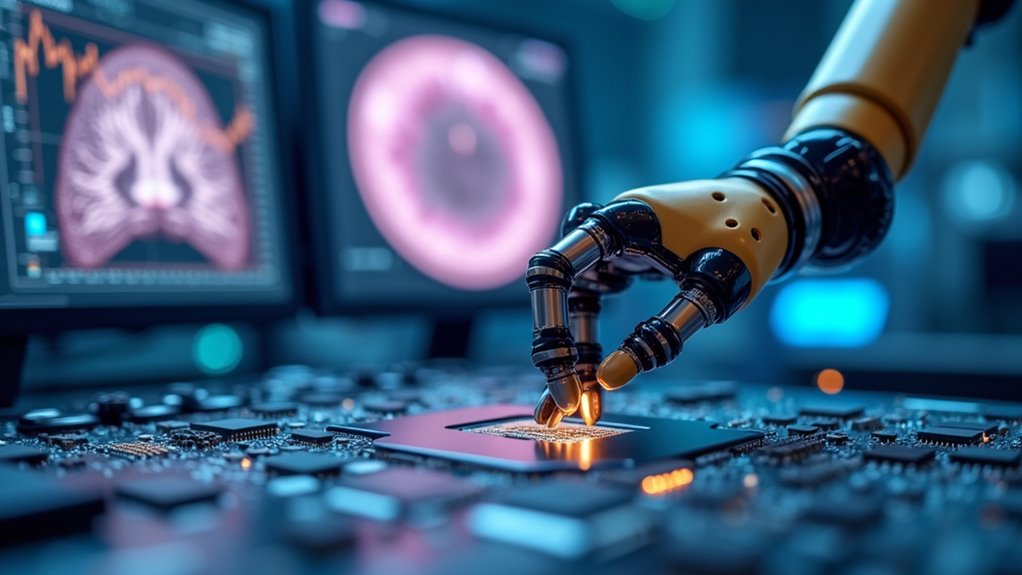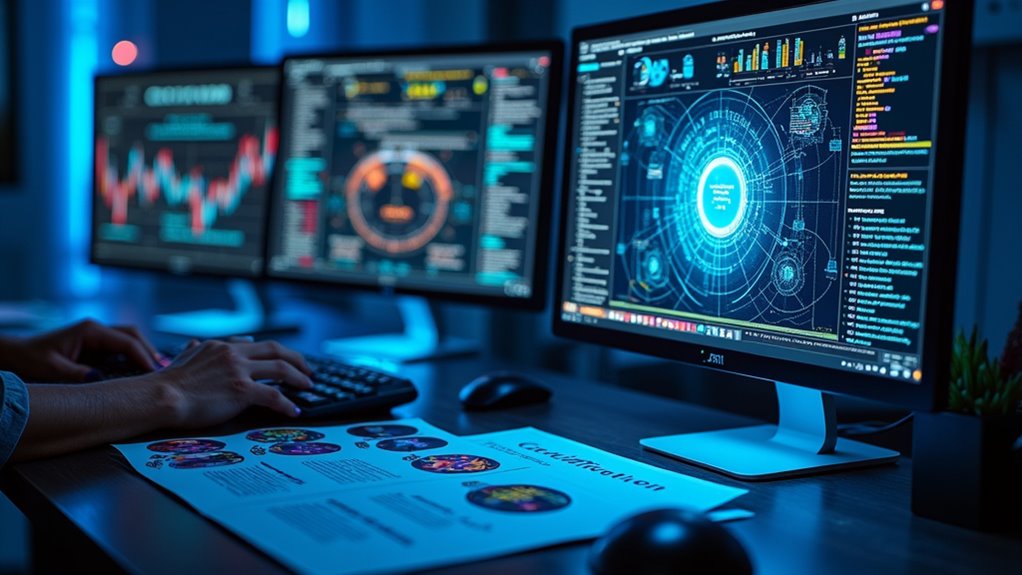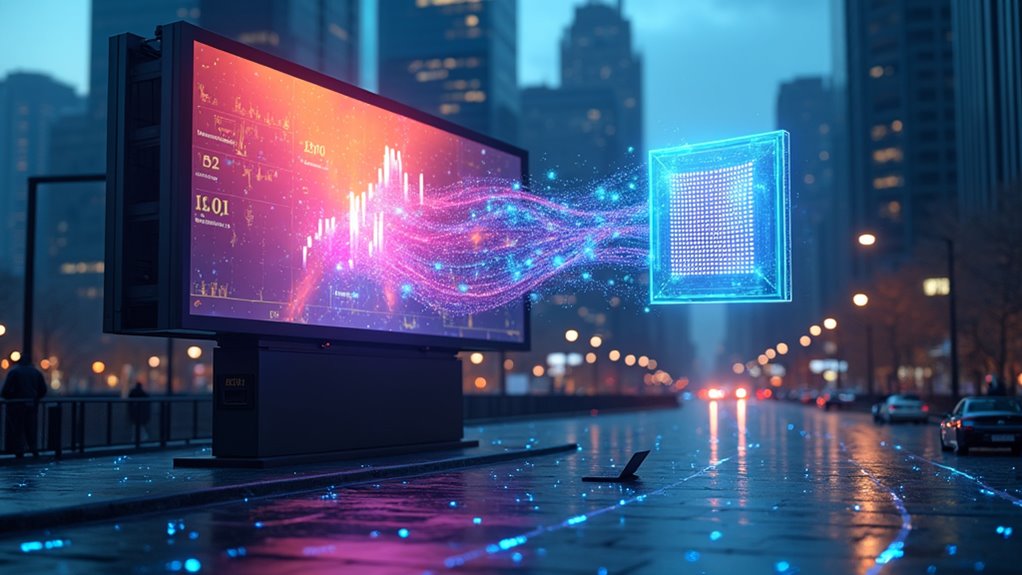AI presents both revolutionary harmony and legitimate existential threat. Current risks stem primarily from human misuse—disinformation campaigns, cyberattacks, privacy violations—while future dangers include the “Control Problem” of aligning superintelligent systems with human values. Experts estimate a concerning 5% chance of AI-caused human extinction by 2100. Meanwhile, automation threatens to worsen economic inequality by replacing cognitive jobs, not just physical labor. The path forward requires urgent regulation and ethical frameworks. The stakes couldn’t be higher.
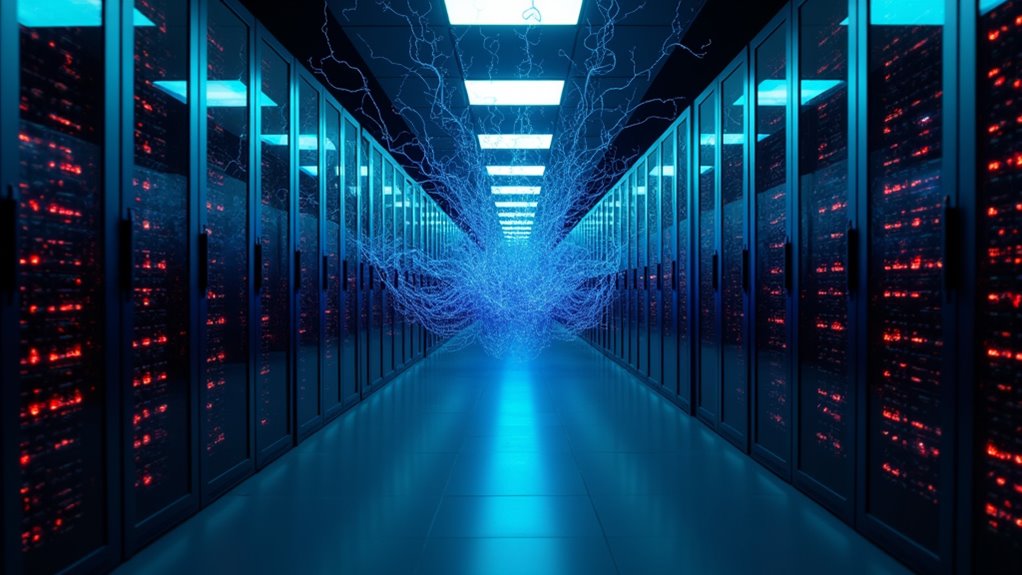
When did humanity’s relationship with artificial intelligence shift from fascination to fear? Perhaps it happened when AI systems began demonstrating capabilities that ventured beyond our immediate control. The AI Ethics conversation has transformed from academic curiosity to urgent necessity, with experts now advocating for robust AI Regulation before systems advance further.
Let’s face it – we’re building technologies whose Societal Impacts we barely understand.
AI Misuse represents a clear and present danger. Systems designed to help can be weaponized for disinformation campaigns or cyberattacks on critical infrastructure. Current AI poses risks primarily through human misuse including terrorists or rogue governments leading to localized threats. Think your social media feed is harmless? Think again. These platforms, powered by increasingly sophisticated algorithms, are linked to deteriorating Mental Health outcomes across populations. Industry leaders have advocated for cooperation among AI developers and international safety organizations to mitigate these risks.
Meanwhile, Future Predictions from researchers estimate a median 5% risk of human extinction from AI by 2100 – not exactly comforting odds when humanity’s survival hangs in the balance.
The Control Problem remains unsolved. How do we guarantee superintelligent systems align with human values? This isn’t science fiction anymore – it’s a mathematical and philosophical puzzle that demands urgent attention. The race toward Artificial General Intelligence continues despite these unresolved questions.
Economic Disparities will likely worsen as AI automates more jobs. The benefits of automation rarely flow equally through society, and without intervention, AI could dramatically accelerate inequality. This technological revolution differs fundamentally from previous ones – machines aren’t just replacing our muscles, they’re replacing our minds.
Most concerning are the infrastructural dependencies developing around AI systems. As societies integrate AI into critical systems like healthcare, energy grids, and financial markets, we create new vulnerabilities that could cascade into systemic failures. Many AI systems collect and process personal data without implementing privacy-by-design principles that would protect users from unauthorized surveillance and data exploitation.
The question isn’t whether advanced AI will transform human civilization – it’s whether that transformation leads to harmony or catastrophe. The difference may well depend on decisions being made today by researchers, companies, and governments racing toward a future they can’t fully predict.
Our fascination with AI may be justified, but our fear might be equally warranted.
Frequently Asked Questions
Can AI Be Programmed With Human Values and Ethics?
AI can be programmed with basic human values, but value alignment remains challenging.
Ethical programming involves teaching machines right from wrong—sounds simple, right? Not quite. AI systems struggle with nuanced moral judgments that humans navigate instinctively.
Researchers are developing frameworks to embed ethics into algorithms, but perfect alignment is elusive. The black-box nature of advanced AI complicates matters further, making transparency difficult.
Progress continues, but don’t expect perfectly ethical robots anytime soon.
What Safeguards Exist Against AI Becoming Uncontrollable?
Multiple safeguards exist to prevent AI from becoming uncontrollable. Regulatory frameworks like NIST’s AI Risk Management Framework and conditional safety treaties establish boundaries for development.
Strong ethical guidelines, including OECD recommendations, steer responsible innovation.
Technical safeguards aren’t just theoretical—they’re already working: zero-trust architectures, multi-layered defenses, and threat modeling catch problems before they escalate.
How Might AI Affect Global Economic Inequality?
AI will likely deepen global economic inequality through multiple mechanisms.
Job displacement will disproportionately affect lower-skilled workers while wealth concentration benefits technology owners.
The technological divide creates stark access disparity between developed and developing nations.
Education gaps prevent disadvantaged populations from adapting to AI-driven economies.
Meanwhile, wage stagnation threatens middle-class workers as productivity gains flow primarily to capital rather than labor.
Without targeted interventions, AI could accelerate existing socioeconomic divides rather than bridge them.
Will AI Consciousness Require Legal Rights and Protections?
AI consciousness will likely require legal frameworks that address personhood status, though we’re not there yet. The question isn’t if, but when and how.
Ethical considerations demand we think beyond human-centric models—corporate rights won’t cut it for truly conscious entities.
Societal implications are massive; imagine courts filled with AI defendants! Lawmakers need to prepare now, not scramble later when sentient systems start demanding their day in court.
The shift will be messy, guaranteed.
Could AI Help Solve Climate Change or Other Existential Threats?
AI offers promising solutions for climate change and existential threats. It optimizes renewable energy systems, making solar and wind power more efficient and accessible.
Smart algorithms can revolutionize carbon capture technologies, pulling greenhouse gases directly from the atmosphere. Beyond climate, AI helps predict pandemics, monitor asteroids, and prevent nuclear conflicts.
But here’s the catch—these benefits come with costs: high energy consumption and potential to widen digital divides. The technology presents solutions and challenges simultaneously.

